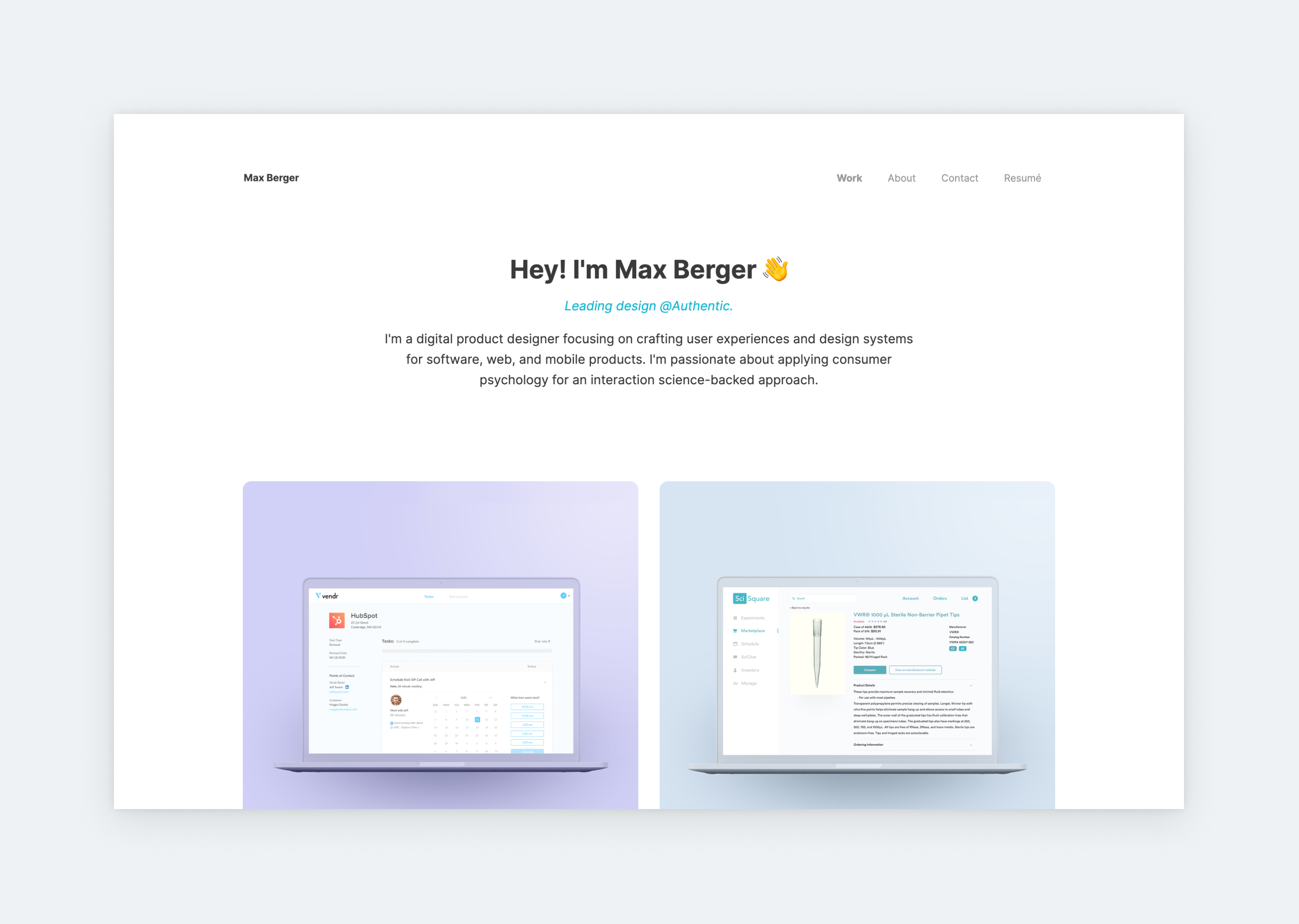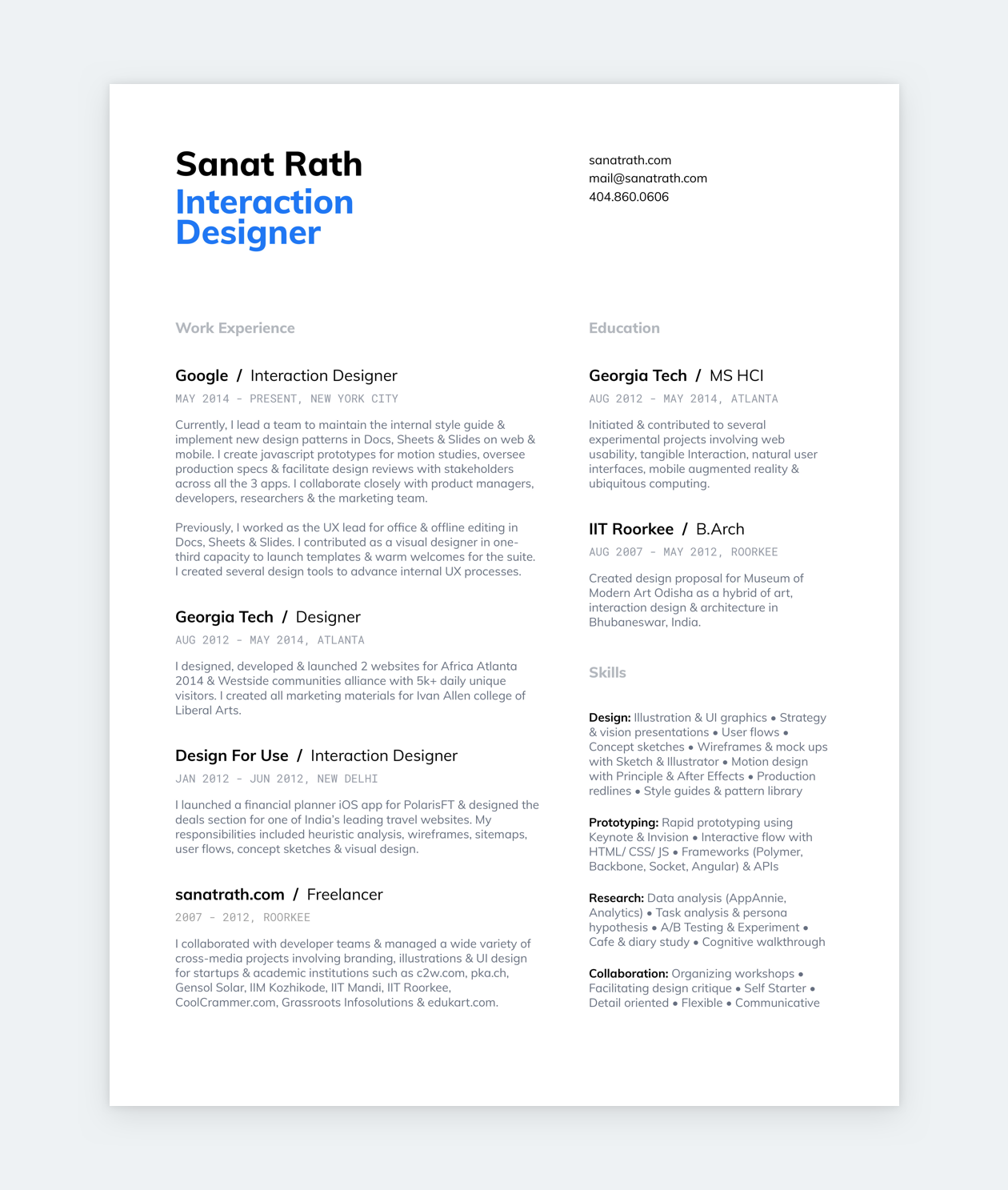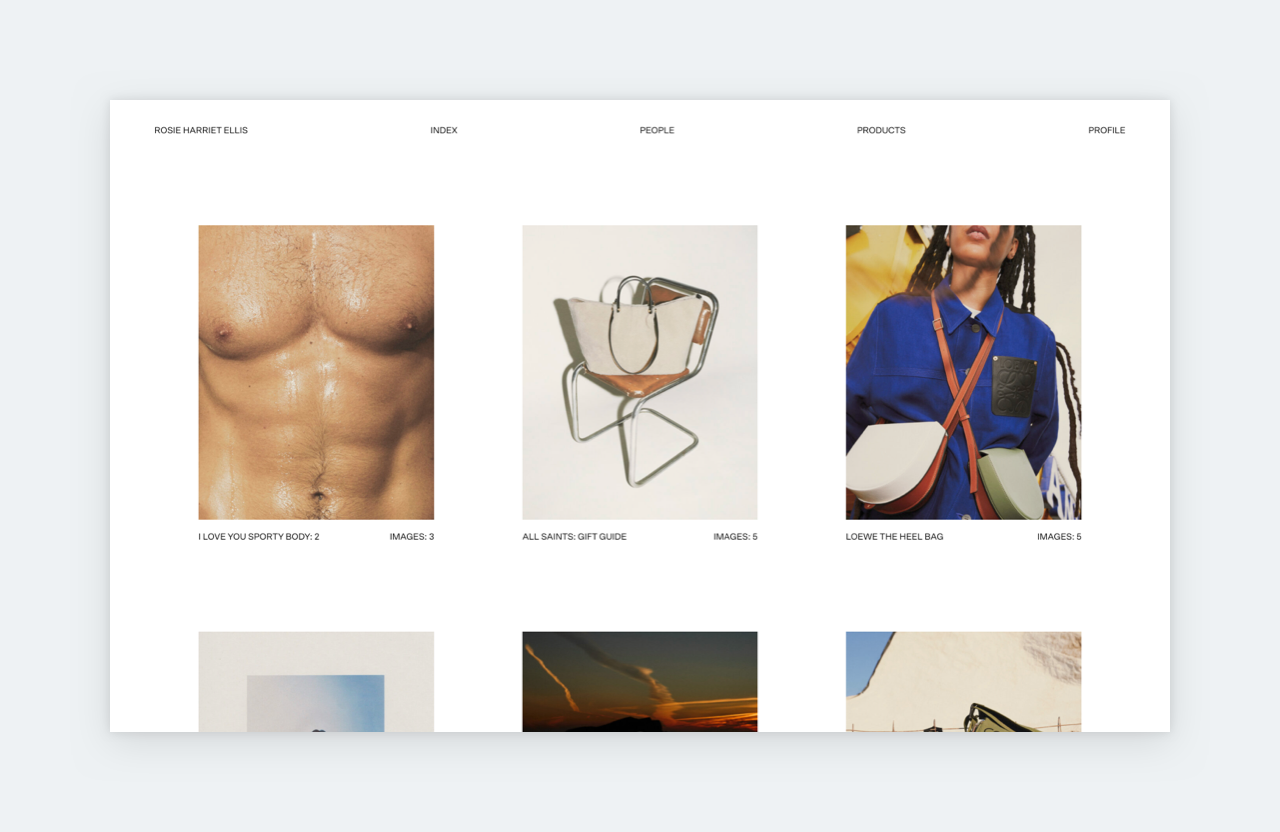You have to stand out as a candidate – but it’s easier said than done. In a landscape as fiercely competitive as today’s, doing the expected might not be enough anymore. So, after polishing your resumé and cover letter, you might want to make a career portfolio to highlight your achievements, expertise, range, and growth. Now the only question is how. And that’s where this guide enters the picture. You’ll learn:
- What is a career portfolio?
- The difference between a career portfolio and a resumé?
- What to include in your career portfolio?
- What not to include in your career portfolio?
- The must-have parts of a career portfolio
- How to build a career portfolio?
What is a career portfolio?
A career portfolio is a collection of your professional achievements presented in the form of categorized samples, galleries, or case studies, and bound together in a document or a website.
Professional achievements cover previous work experience, education, pro-bono projects, and even passion projects. The form of presentation depends on the nature of your work:
- Highly visual fields, such as photography or makeup artistry, tend to use galleries.
- Other fields mix visuals with text in the form of case studies.
A career portfolio can be a document (PDF), or a website. Nowadays, portfolio websites are more popular, because of their availability and ease of use. What’s more, with modern portfolio and website builders , anybody can create one on their own.
What to include in a career portfolio?
You can include anything in a career portfolio that’s relevant to your profession. However, it’s best to approach your career portfolio with a strategy in mind. There’s a common saying in design circles: “you’ll be judged based on your worst work.”
If you present something mediocre (or worse) in your portfolio, it can actually decrease your chances of succeeding. Therefore, you should present only your best work in your portfolio. There’s no quota to hit. One brilliant presentation is better than 3 mediocre ones. But how can you identify your best work?

Your best work shows your experience, expertise, as well as willingness to learn and grow. It’s the “willingness to learn and grow” part that many professionals forget about. Most companies are looking for professionals who can evolve in their profession. Your portfolio can prove that you are capable of this. Here’s how you can prove this in your portfolio:
Unlike your resumé, your portfolio is an empty canvas with limitless space. This allows you to describe your thinking process through real-life experiences or – if you’re from a visual field – to show a varied range of samples.

Showing your process and range
If you’re writing a case study, you can present how you’ve changed direction throughout a project for better outcomes, you can list what you’ve learned through a certain project, or you can go into details about what you’ve been doing differently since a certain project.
If your portfolio is visual, show diversity to prove your range. Maybe some of your work is not necessarily your style, but that doesn’t mean it’s not quality work. It’ll show that you’re willing to get out of your comfort zone when it’s required and still do an amazing job.
As you can see, sometimes your best work is not what first comes to mind. Make sure to spend some time thinking about the projects that made you a better professional. While at it, you can also think of what sells. If you have something that’s tried-and-true in your field run with it. Attempting to be different for the sake of being different can backfire, making you look standoffish or out of the loop.
So let’s go through these points again:
- Pick your best and most relevant work only.
- Your best work showcases your experience, expertise, range and willingness to grow.
- Don’t try to be forcefully different for no reason.
What not to include in your portfolio?
Now you know what to include in your career portfolio, but it can be helpful to go through a few things that you should definitely leave out:
Outdated work has no place in your portfolio. You’re better off without projects that were made a decade ago, unless they’re still in use or won you an award. Instead, add work that’s recent, using the newest techniques mixed with the gold-standards.
Irrelevant work will clutter up your portfolio. If you’re an editorial photographer, including your hobby graphic design projects will only cause confusion and make your portfolio look amateurish. Keep things focused.
It doesn’t matter how you present it, work that’s below your standards will reflect bad on you. There’s no quota. Don’t add things to your portfolio that you’re not proud of or sure of. Here’s a good pointer: if you have to think too much about it, you’re better off without it.
Let’s say, with all this considered you’re left with only a very few projects. In that case, you can add passion projects or do some pro-bono work for material. Just because you don’t get paid for something it’s not less valid than other work.
How to present your projects in a career portfolio?
Now that you’ve assembled your projects it’s time to add them to your portfolio. We’ve already mentioned that there are two common ways to present your work: through categorized examples or through case studies. Let’s see how you can do
Categorized examples or galleries are best for visual portfolios, such as photography, makeup, interior design, and graphic design. Your only job is to find the common thread that ties separate pieces of your work together – a theme, or a project, a color story, and whatnot – group them together and add them to your portfolio.
Case studies allow you to describe singular projects. They are best for professions where pictures can’t do all the talking, such as marketing, UX design, or teaching. If you go with this format, you should dedicate a separate section or page for each case study.

Projects to the center stage
Regardless of the format you’re presenting your projects, you must allow them to take center stage. While your personality matters a lot for company culture, it’s your work that’s most important when it comes to the hiring process. So make sure that your projects are easily accessible. Preferably, you should link to them from your home page, using stunning and descriptive thumbnails. Easy access to projects is key.
How to build a career portfolio?
Before getting to work, you have to decide on the platform of your portfolio. You have two options:
- Portfolio as a document.
- Portfolio as a website.
Once you’ve made up your mind, you have to choose an application that you’ll use to build the portfolio and its contents. Here are a few things to consider:
- Choose something that will not take too much time to learn. Your goal is to get a portfolio done and the more districations you have the harder it’ll be to finish it.
- Follow industry standards. Check how other people in your field present their work.
- If you don’t want to get distracted, rely on portfolio templates. They are customizable enough without being too distracting.
Once you get to work, follow this step-by-step plan that has been working for us:
- Choose the work you want to present in your portfolio based on what we’ve discussed.
- Collect all materials you need to improve the presentation (photos, artefacts, drafts, etc.)
- If you’re making a visual portfolio, decide on the themes or topics around which you’ll organize your work.
- Sort out your work into those categories.
- If you have to write copy for your projects, start by writing that. Leave your intro, about and other texts for later. By the time you arrive there, you’ll have a much better idea of what to write in those.
- Now you can start working on your complementary material: about page, introduction, photo, thumbnails, etc.
- Add everything to your portfolio.
- Customize your template, fonts, colors, and try to make them consistent throughout the entire portfolio.
- Ask your friends or colleagues to review your portfolio and iterate.
The idea behind this process is that you start with your content. If you start with customization, which is the easy part, you’ll get distracted and you’ll spend too much time on something that should be secondary. Also, you should adjust the portfolio to your content and not the opposite, because the content is always first.
Additional parts of a career portfolio
Unlike a simple resumé, a portfolio provides you the space to show more of yourself as a professional. After your work it’s your personality that’ll further your case, as most modern companies want someone who fits their culture or is capable of adding to it. Here are the additional parts that can add some spice to your portfolio:
Short introduction
Try to write down your professional manifesto or tagline in one or two short sentences and add it to your portfolio cover page! This is a good way to catch your reader’s attention, and show some personality and creativity. If you’re adding your professional title to your introduction, make sure that you call what you are: if you’re a graphic designer with years worth of experience, don’t be afraid to call yourself a “senior graphic designer.” It shows that you know your worth and the level you’re at.
Photo
While it’s definitely not a must-have, a photo of yourself is an easy way to add some personality to your portfolio. Nowadays, you don’t even have to go to a professional photographer to get a portrait done. In most professions a selfie or a home-made photo is perfectly acceptable, and maybe even better than a professional one (the opposite is true for your resumé).
About page (reading list, hobbies, playlist, etc.)
The about page is a must. It allows you to show who you are as a professional so your future employer can learn about your journey, passion, and personality. Our experience tells us that many professionals do not like to write about themselves. However, with writing prompts and guiding questions it becomes much easier:
- Why did you choose this career?
- How did you start out?
- What were the highest points of your professional journey?
- What inspires you in your job? Where do you seek inspiration?
- What is on your professional reading, watching, listening list (UX design books, podcasts, or videos related to your profession)?
- How do you approach your projects?
- What’s your favorite part about your job?
If you answer a few of these questions you’ll have a great about page. But don’t be afraid to add to it! After all, it’s about your personality.
Contact page
You have to provide a way for your visitors to get in touch with you. This can be done by including your contact info in an easy-to-reach place on your portfolio or by adding a contact form. But you can add both just to make sure that they can reach you.
Social media (if its content is appropriate)
You can link to your social media, such as LinkedIn or Instagram, if the content on your feeds is appropriate for work. If you mostly share your work on these platforms and you have a following, linking to social media can be very beneficial for your career.
The difference between a career portfolio and a resumé
Throughout this article we’ve pointed out some of the differences between career portfolios and resumés. That’s because there are many who fail to see what differentiates the two. No worries! We’ll go through some of the key differences in more detail:
- A resumé shows your career path in chronological order with truncated information. A portfolio shows the work that you’ve done through that path, using real, detailed examples.
- A resumé is more formal, therefore restrictive. There’s a simple formula on how to do it right, and besides that it’s only its design that you can play with. A portfolio provides more space for your personality to shine through. Besides your intro, you have an about page, your case studies or galleries, and the design.
- The resumé is a must-have for any application. In some professions, like architecture and graphic design, portfolios are a must too, but there are professions where they’re only complementary.
- Resumés are static documents. Digital portfolios are interactive.
These are some of the key differences between the two. Remember, resumés and portfolios are not interchangeable. They serve different purposes. However, you can match their look and harmonize them. For example, by making a case study for your portfolio out of a project that you’ve mentioned in your resumé.
You are now a career portfolio expert. The only thing left is work: start creating your portfolio!